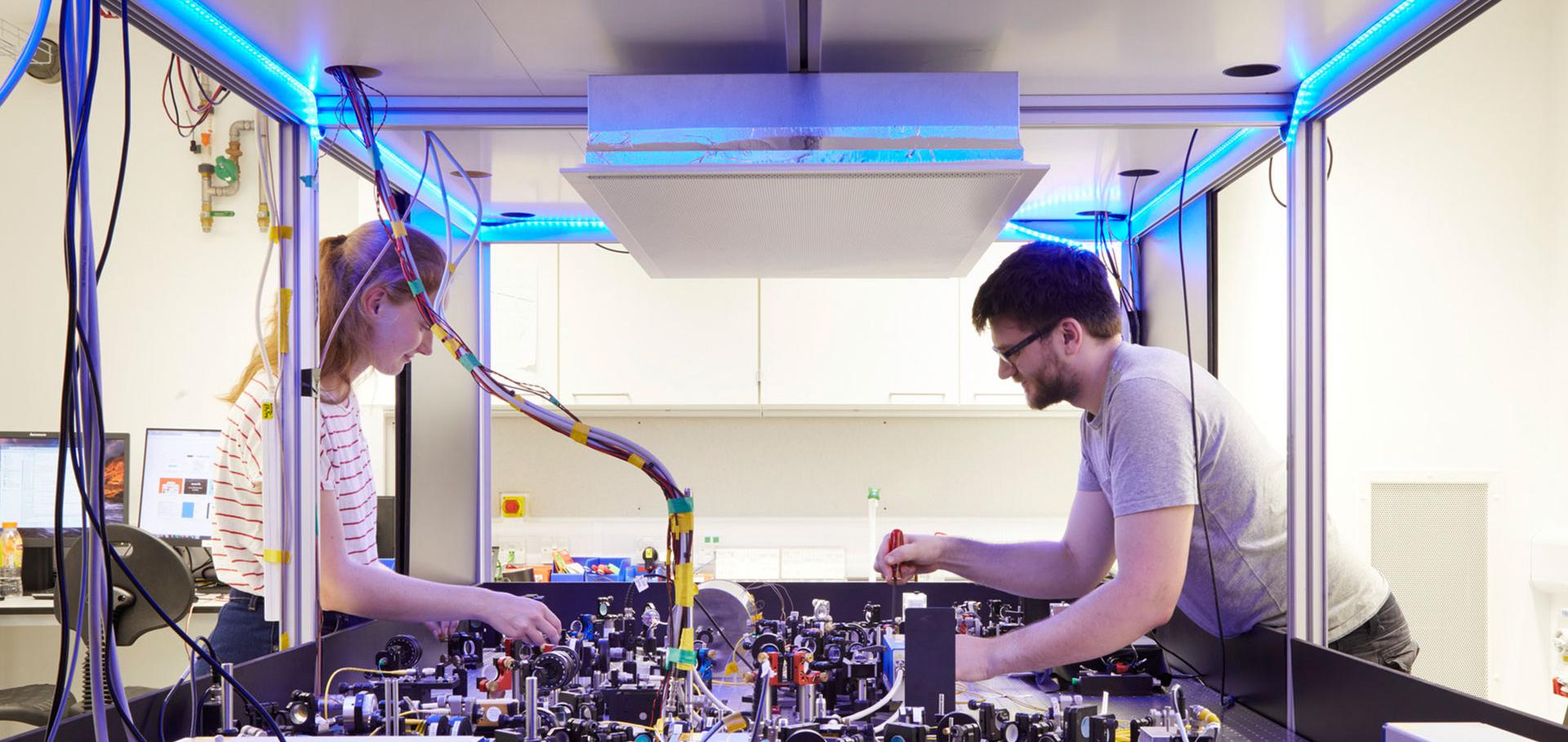A comparison of time-dependent Cloudy astrophysical code simulations with experimental X-ray spectra from keV laser-generated argon plasmas
Journal of Quantitative Spectroscopy and Radiative Transfer Elsevier BV 348 (2026) 109720
Bounding elastic photon-photon scattering at √s ≈ 1 MeV using a laser-plasma platform
Physics Letters B Elsevier 861 (2025) 139247
Abstract:
We report on a direct search for elastic photon-photon scattering using x-ray and 𝛾 photons from a laser-plasma based experiment. A 𝛾 photon beam produced by a laser wakfield accelerator provided a broadband 𝛾 spectrum extending to above 𝐸𝛾 = 200 MeV. These were collided with a dense x-ray field produced by the emission from a laser heated germanium foil at 𝐸𝑥 ≈ 1.4 keV, corresponding to an invariant mass of √𝑠 = 1.22 ± 0.22 MeV. In these asymmetric collisions elastic scattering removes one x-ray and one high-energy 𝛾 photon and outputs two lower energy 𝛾 photons. No changes in the 𝛾 photon spectrum were observed as a result of the collisions allowing us to place a 95% upper bound on the cross section of 1.5 × 1015 μb. Although far from the QED prediction, this represents the lowest upper limit obtained so far for √𝑠 ≲ 1 MeV.Extended X-ray absorption spectroscopy using an ultrashort pulse laboratory-scale laser-plasma accelerator
Communications Physics Springer Nature 7:1 (2024) 247
Abstract:
Laser-driven compact particle accelerators can provide ultrashort pulses of broadband X-rays, well suited for undertaking X-ray absorption spectroscopy measurements on a femtosecond timescale. Here the Extended X-ray Absorption Fine Structure (EXAFS) features of the K-edge of a copper sample have been observed over a 250 eV window in a single shot using a laser wakefield accelerator, providing information on both the electronic and ionic structure simultaneously. This capability will allow the investigation of ultrafast processes, and in particular, probing high-energy-density matter and physics far-from-equilibrium where the sample refresh rate is slow and shot number is limited. For example, states that replicate the tremendous pressures and temperatures of planetary bodies or the conditions inside nuclear fusion reactions. Using high-power lasers to pump these samples also has the advantage of being inherently synchronised to the laser-driven X-ray probe. A perspective on the additional strengths of a laboratory-based ultrafast X-ray absorption source is presented.Dielectronic satellite emission from a solid-density Mg plasma: relationship to models of ionisation potential depression
Physical Review E American Physical Society 109:4 (2024) 045204
Abstract:
We report on experiments where solid-density Mg plasmas are created by heating with the focused output of the Linac Coherent Light Source x-ray free-electron laser. We study the K-shell emission from the helium- and lithium-like ions using Bragg crystal spectroscopy. Observation of the dielectronic satellites in lithium-like ions confirms that the M-shell electrons appear bound for these high charge states. An analysis of the intensity of these satellites indicates that when modeled with an atomic-kinetics code, the ionization potential depression model employed needs to produce depressions for these ions which lie between those predicted by the well known Stewart-Pyatt and Ecker-Kroll models. These results are largely consistent with recent density functional theory calculations.Generation of photoionized plasmas in the laboratory of relevance to accretion-powered x-ray sources using keV line radiation
High Energy Density Physics Elsevier 51 (2024) 101097


